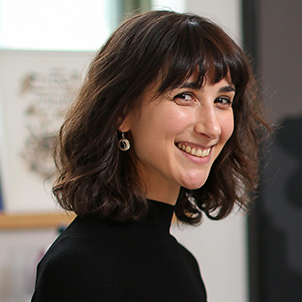
- Title Assistant Professor of Biology
- Education B.S. New York University
Ph.D. University of California, San Francisco - Web Address https://www.youngerlaboratory.org/
- Email myounger@bu.edu
- Phone 617-358-1144
- Area of Interest Neurobiology, Olfaction, Odorant Receptors, Chemosensation, Mosquitoes, Synaptic Transmission, Calcium Imaging, Neurophysiology, Behavior
- CV
Current Research
The Younger lab studies olfaction in mosquitoes. The primary focus of the lab is to learn about how mosquitoes detect and encode human odor and how this drives their search for a human to bite. Mosquito-borne diseases affect millions of people worldwide and claim more than half a million lives each year. Only female mosquitoes bite, and they do so because they require a blood-meal for reproduction. Female mosquitoes rely heavily on human-derived chemosensory cues as they search for a blood meal and understanding how mosquitoes detect and encode human odor would provide a major inroad to preventing mosquito biting behavior and disease transmission.
The central approach of the Younger lab is to combine neurophysiology, anatomy, genetics, and behavior in order to understand the principles of olfaction across mosquito species. The Younger lab develops and uses a combination of modern neuroscience approaches newly developed for use in Aedes aegypti mosquitoes to study olfaction. We develop and use CRISPR-based gene editing approaches to label different neuron types, complemented by functional imaging and electrophysiology during precise odor delivery and quantification. Our approach enables us to combine function with anatomy, generating static maps of the mosquito brain at the light level in conjunction with whole-brain serial section electron microscopy. The lab aims to apply these approaches to understand mosquito olfaction and ultimately develop novel strategies to thwart these deadly insects.
Selected Publications
- Fernández-Chiappe F., Ocker G.K., and Younger M.A., (2024) “Prospects on non-canonical olfaction in the mosquito and other organisms: why co-express?” Current Opinion in Insect Science 67: 101291.
- Guerina F.V., A.P. Patkar, and M.A. Younger (2023). “Introduction to Techniques Used to Study Mosquito Neuroanatomy and Neural Circuitry”. Cold Spring Harbor Protocols 2023:10.
- Smith E.J., Vizueta J., Younger M.A., Mullen S.P. and Traniello J.F.A. (2023) “Dietary diversity, sociality, and the evolution of ant gustation.” Front Ecol Evol 11:1175719.
- Herre M., O.V. Goldman, T.C. Lu, G. Caballero-Vidal, Y. Qi, Z.N. Gilbert, Z. Gong, T. Morita, S. Rahiel, M. Ghaninia, R. Ignell, B.J. Matthews, H. Li, L.B. Vosshall, and M.A. Younger (2022). “Non-canonical odor coding in the mosquito.” Cell 185:3104-3123.
- Zhao Z., J.L. Zung, A. Hinze, A.L. Kriete, A. Iqbal, M.A. Younger, B.J. Matthews, D. Merhof, S. Thiberge, R. Ignell, M. Strauch, and C.S. McBride (2022). “Mosquito brains encode unique features of human odour to drive host seeking.” Nature 605:706-712.
- Matthews B.J., M.A. Younger, and L.B. Vosshall (2019). “The ion channel ppk301 controls freshwater egg-laying in the mosquito Aedes aegypti,” Elife 8:e43963.
- Orr B.O., D. Gorczyca, M.A. Younger, L.Y. Jan, Y.N. Jan, and G.W. Davis (2017) “Composition and control of a Deg/ENaC channel during presynaptic homeostatic plasticity,” Cell Reports 20:1855-1866.
- Younger M.A., M. Mueller, A. Tong, E.C. Pym, and G.W. Davis (2013). “A presynaptic ENaC channel drives homeostatic plasticity,” Neuron 79:1183-96.
- Keene A.C., E.O. Mazzoni, J. Zhen, M.A. Younger, S. Yamaguchi, J. Blau, C. Desplan, and S.G. Sprecher (2011) “Distinct visual pathways mediate larval light avoidance and circadian clock entrainment.” J Neurosci 31:6527-34.
- Cruikshank S.J., M. Hopperstad, M.A. Younger, B.W. Connors, D.C. Spray, and M. Srinivas (2004). “Potent Block of Cx36 and Cx50 gap junction channels by mefloquine,” Proc Natl Acad Sci USA 101:12364-12369.
Courses Taught:
- BI/NE 520 Sensory Neurobiology